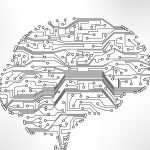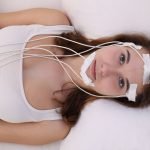Do Neckties Reduce Brain Function?
Node Smith, ND
New research questions weather wearing a necktie is a good idea; a supportive argument for a more relaxed business environment. A recent study, published in the journal Neuroradiology, has found that wearing constrictive neck-wear such as neckties is associated with reduced blood flow to the brain.1 Reduced blood flow to the brain is known to cause reduction in proper brain functioning.
Consequences of constrictive clothing
The underlying premise of these findings is fairly straight forward. Wearing constrictive clothing around the neck squeezes arteries and veins in the neck and reduces blood flow.
Study looked at 30 male participants with an average age of 24 years
The study looked at 30 male participants with an average age of 24 years. Brain scans were conducted at the introduction of the study. Half the men were asked to wear open collared shirts and the other half were asked to wear neckties that were tight enough to cause slight discomfort. The necktie group were scanned 3 times – tie loose with collar unbuttoned, tie tightened to slight discomfort, and then tie loosened again. The other group had 3 MRIs, but without a tie and with an open collar.
Results
The results showed that wearing a tie reduced blood flow by 7.5 percent. When the ties were loosened, the MRI showed a consistent 5.7 percent deficit in blood flow remained. Five of the tie wearing participants had a greater than 10 percent reduction in blood flow to the brain.
Interesting study questions motivations behind wearing different types of clothing
This study is very interesting and certainly questions the motivations behind wearing certain types of clothing. It has been a historically recognized aspect of naturopathic physical medicine practice to emphasize the use of loose fitting clothing to allow the body to move freely and ventilate. Blood flow is increased with movement, but also inhibited through constriction. Just because this study was on neckties shouldn’t mean that the same principle couldn’t be considered with other tight-fitting items of clothing such as pants, belts, wrist watches, shoes, or even hats.
Source:
- Lüddecke, R., Lindner, T., Forstenpointner, J. et al. Neuroradiology (2018). https://doi.org/10.1007/s00234-018-2048-7
Image Copyright: <a href=’https://www.123rf.com/profile_dolgachov’>dolgachov / 123RF Stock Photo</a>
 Node Smith, ND, is a naturopathic physician in Portland, OR and associate editor for NDNR. He has been instrumental in maintaining a firm connection to the philosophy and heritage of naturopathic medicine among the next generation of docs. He helped found the first multi-generational experiential retreat, which brings elders, alumni, and students together for a weekend camp-out where naturopathic medicine and medical philosophy are experienced in nature. Four years ago he helped found the non-profit, Association for Naturopathic ReVitalization (ANR), for which he serves as the board chairman. ANR has a mission to inspire health practitioners to embody the naturopathic principles through experiential education. Node also has a firm belief that the next era of naturopathic medicine will see a resurgence of in-patient facilities which use fasting, earthing, hydrotherapy and homeopathy to bring people back from chronic diseases of modern living; he is involved in numerous conversations and projects to bring about this vision.
Node Smith, ND, is a naturopathic physician in Portland, OR and associate editor for NDNR. He has been instrumental in maintaining a firm connection to the philosophy and heritage of naturopathic medicine among the next generation of docs. He helped found the first multi-generational experiential retreat, which brings elders, alumni, and students together for a weekend camp-out where naturopathic medicine and medical philosophy are experienced in nature. Four years ago he helped found the non-profit, Association for Naturopathic ReVitalization (ANR), for which he serves as the board chairman. ANR has a mission to inspire health practitioners to embody the naturopathic principles through experiential education. Node also has a firm belief that the next era of naturopathic medicine will see a resurgence of in-patient facilities which use fasting, earthing, hydrotherapy and homeopathy to bring people back from chronic diseases of modern living; he is involved in numerous conversations and projects to bring about this vision.










